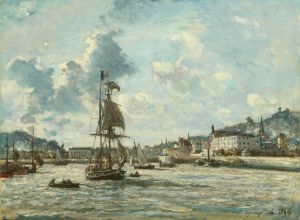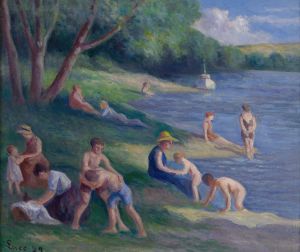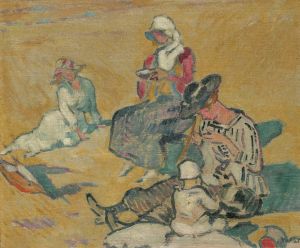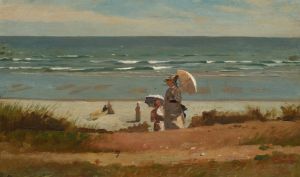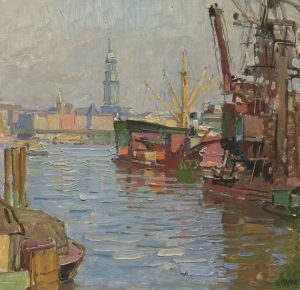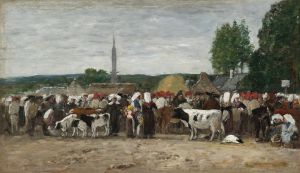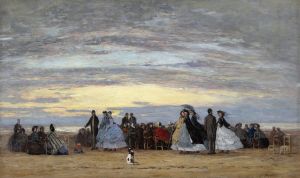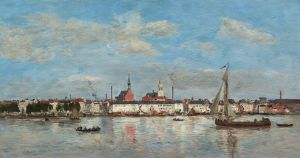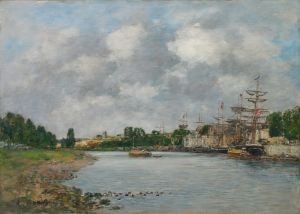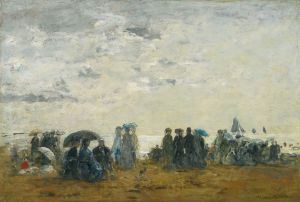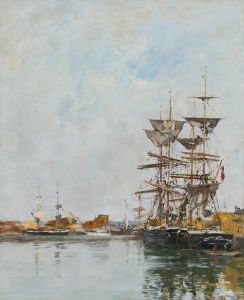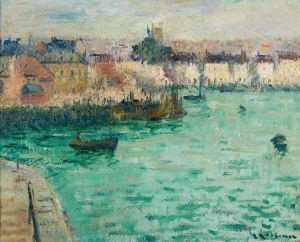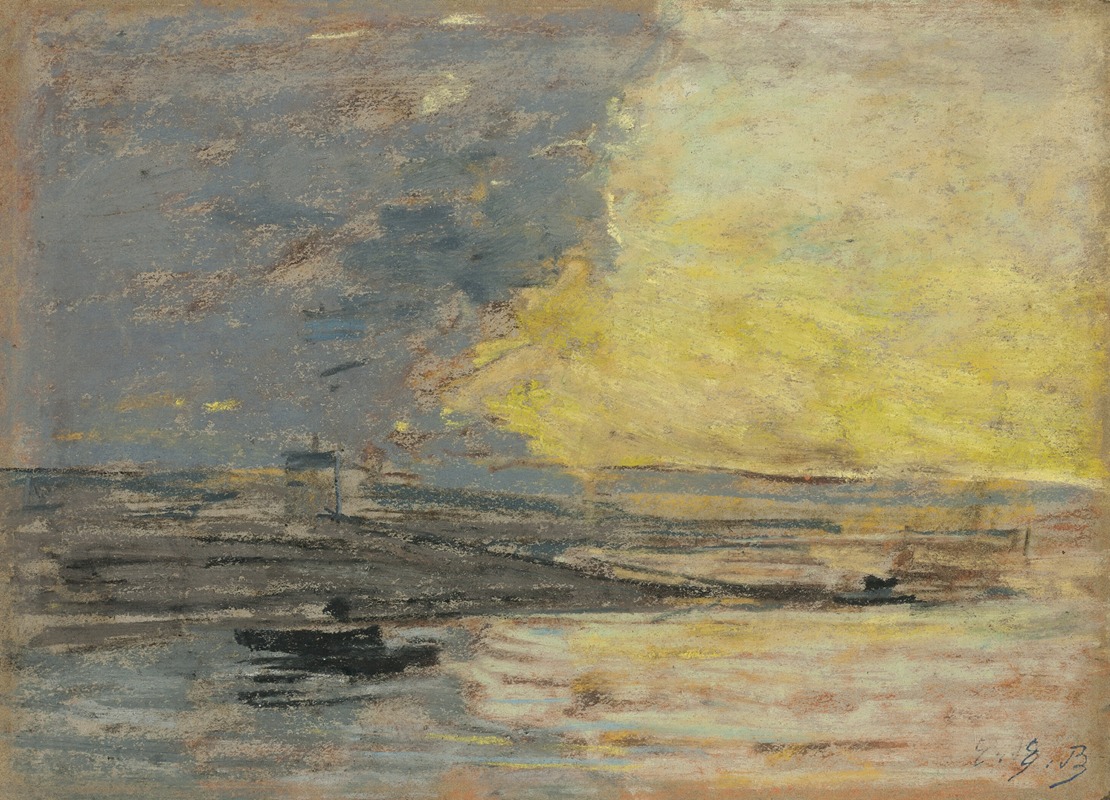
Seaside, Port of Honfleur
A hand-painted replica of Eugène Boudin’s masterpiece Seaside, Port of Honfleur, meticulously crafted by professional artists to capture the true essence of the original. Each piece is created with museum-quality canvas and rare mineral pigments, carefully painted by experienced artists with delicate brushstrokes and rich, layered colors to perfectly recreate the texture of the original artwork. Unlike machine-printed reproductions, this hand-painted version brings the painting to life, infused with the artist’s emotions and skill in every stroke. Whether for personal collection or home decoration, it instantly elevates the artistic atmosphere of any space.
"Seaside, Port of Honfleur" is a painting by the French artist Eugène Boudin, who is widely recognized as one of the most important precursors of Impressionism. Born on July 12, 1824, in Honfleur, France, Boudin was known for his seascapes and beach scenes, capturing the changing effects of light and atmosphere with remarkable skill.
The painting "Seaside, Port of Honfleur" depicts the port of Honfleur, a picturesque town located in the Normandy region of France. Honfleur is known for its historic port, characterized by its slate-covered houses and bustling maritime activity. This setting provided a rich source of inspiration for Boudin, who spent much of his life in the region.
Boudin's work is characterized by his ability to capture the transient effects of light and weather, a technique that would later influence the Impressionists. In "Seaside, Port of Honfleur," Boudin employs a delicate palette and loose brushwork to convey the atmosphere of the port. The painting likely features the harbor, with boats moored along the quay and the town's distinctive architecture in the background. The sky and water are rendered with a sense of movement and fluidity, reflecting Boudin's keen observation of natural phenomena.
Eugène Boudin's approach to painting was innovative for his time. He often painted en plein air, or outdoors, to better capture the changing conditions of the landscape. This method allowed him to observe and depict the nuances of light and color with greater accuracy. His dedication to painting outdoors was a significant influence on younger artists, including Claude Monet, who would become a leading figure in the Impressionist movement.
Boudin's work was well-regarded during his lifetime, and he exhibited regularly at the Paris Salon. His paintings were appreciated for their freshness and vitality, qualities that set them apart from the more formal and polished works of his contemporaries. "Seaside, Port of Honfleur" exemplifies these qualities, showcasing Boudin's ability to convey the essence of a scene with economy and precision.
The port of Honfleur itself has a rich history, dating back to the Middle Ages. It was an important maritime center, serving as a departure point for voyages to the New World and a hub for trade and fishing. The town's picturesque charm and historical significance have made it a popular subject for artists over the centuries.
Eugène Boudin's legacy is firmly established in the history of art. His contributions to the development of landscape painting and his influence on the Impressionists are widely recognized. "Seaside, Port of Honfleur" is a testament to his skill and vision, capturing a moment in time with sensitivity and grace.
Today, Boudin's works can be found in major museums and collections around the world, including the Musée d'Orsay in Paris and the National Gallery of Art in Washington, D.C. His paintings continue to be celebrated for their beauty and their role in the evolution of modern art.





